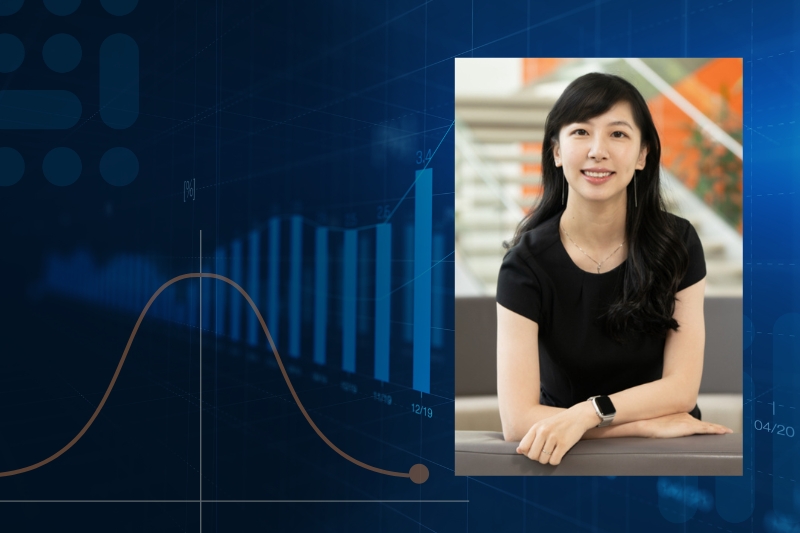


Nurse to statistician
Photo courtesy of Yaxi Huang January 13, 2025
UD Online M.S. in Applied Statistics launches Yaxi Huang into career as a statistician in the pharmaceutical industry
Yaxi Huang, who is originally from China, worked as a nurse for six years before moving to the U.S. When she arrived, she wanted a career change, and she zeroed in on a career as a statistician in the pharmaceutical industry.
“As a nurse, I had been involved with clinical studies, giving the patient medicine and recording their response to it,” Huang said. “And I remember thinking, ‘That sounds like an interesting job; people use this data that I record to decide if a medication works or not on a larger scale and how it can be improved.’”
After completing her undergraduate degree at the University of Delaware as a computer science major with a mathematics minor, Huang researched UD’s M.S. in Statistics program. Whether it’s pharmaceutical, agricultural or another industry, statisticians are in high demand — the No. 4 Best Business Job according to U.S. News and World Report.
Although nurses and statisticians have vastly different responsibilities, both careers have the ability to help the greater community, Huang said.
“I became a nurse because I just want to help people,” she said. “But now I can still help people live better lives, not as a nurse, but helping to create medicines with my statistical background.”
However, just as she was planning on applying for UD’s traditional (in-person) master’s in statistics, she and her husband had to move to Boston. Because of this, Huang decided to apply for UD’s Online M.S. in Applied Statistics. The program fit her schedule, especially because she could do her work from home, on her own time, and watch over their daughter.
“The online program was much more suited to my situation,” Huang said. “I could choose any time to do my assignments while having time to work or take care of my daughter — whatever I needed.”
Tom Ilvento, professor in the Department of Applied Economics and Statistics and the creator of the department’s online statistics program, said that Huang was the ideal student for the degree.
“When reviewing students, I look closely for what is motivating them to start our program,” Ilvento said. “She had a math and computer skills background, but more importantly, she had a vision and a plan. It was her idea to do an internship during her degree, and that worked out extremely well.”
Through the applied statistics master’s degree, Huang secured an internship at Endo International, a specialty pharmaceutical company, as a statistician and programmer within its biostatistics department.
She worked to create Study Data Tabulation Model (SDTM), Analysis Data Subject Level (ADSL), and Analysis Data Model (ADaM) datasets with raw patient data. These datasets organized raw data in a way that could eventually be presented to the Food and Drug Administration (FDA) about current drugs that the company was working on.
In addition to creating datasets, Huang also generated Tables, Listings and Figures (TLFs), which summarize data in a way that it can be interpreted and analyzed. These TLFs could be used in Clinical Study Reports for the company.
“Throughout the master's degree we learned the basics of statistical methods and programming, using programming tools like the SAS and R,” Huang said. “For my internship and current job, I continue to use and build upon those skills and programming knowledge.”
After her internship with Endo International, Huang received a job as an independent contractor; she’s still working with Endo through another company, KPS Life. She is continuing this job part time while she completes her UD master’s degree.
Not only is Huang applying the skills she’s learned from her master’s degree to her career, she is using it to benefit her personal life as well.
One of the core courses students in the applied statistics online degree take is Design and Analysis of Experiments (STAT 615). The course encourages students to design an experiment and use their statistical skills to analyze their data. For Huang’s project, she looked into what bedtime habits led to her daughter sleeping the most at night.
“It was fun because we could do something that we were interested in, while still using our statistical skill to give us some results,” Huang said. “Before my degree, I didn’t feel like statistics could help out my daily life personally, but after this, I really realized I could use my skills for anything.”
Contact Us
Have a UDaily story idea?
Contact us at ocm@udel.edu
Members of the press
Contact us at 302-831-NEWS or visit the Media Relations website

